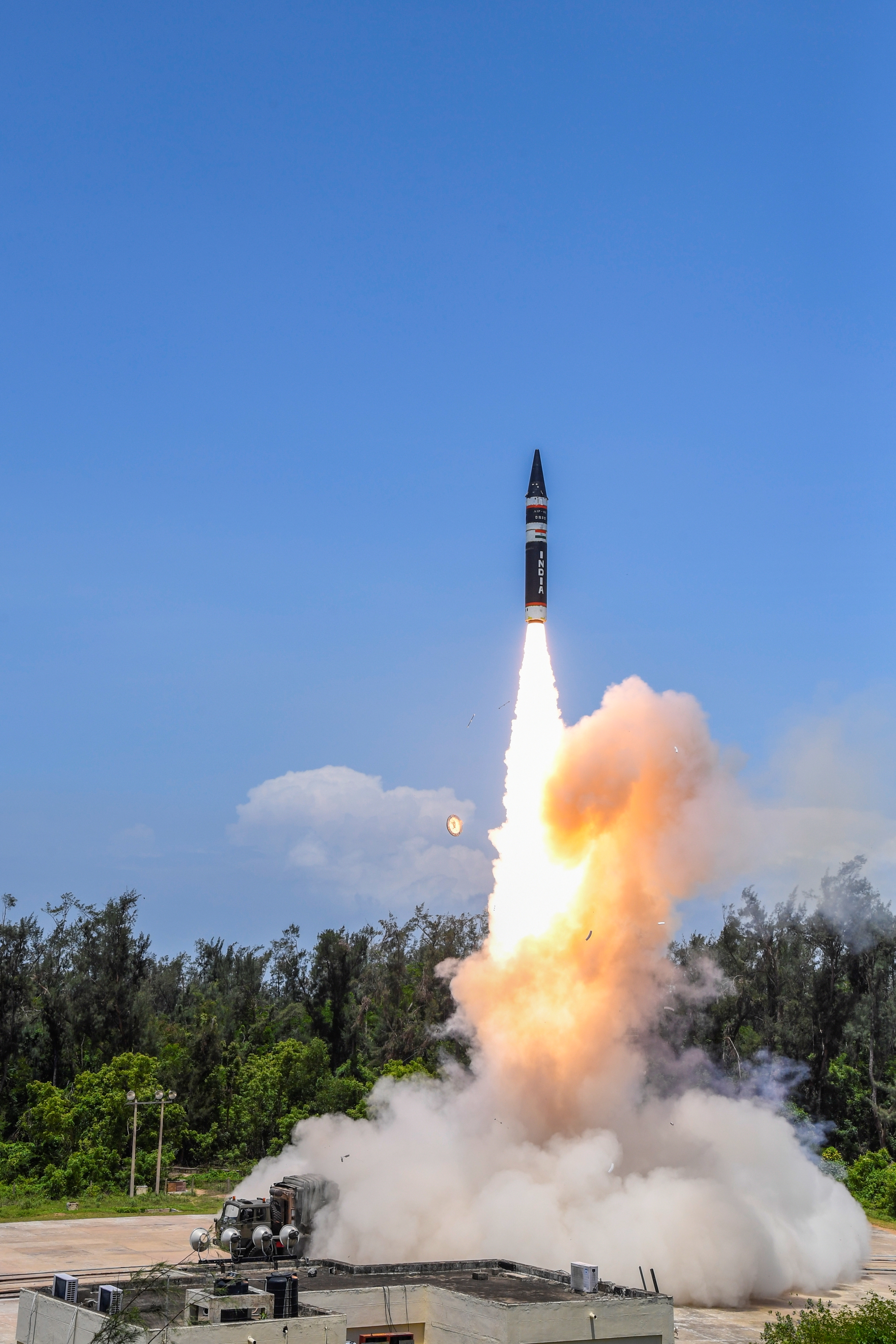India’s Strategic Forces Command (SFC), also known as the Strategic Nuclear Command, is undergoing a significant overhaul with the introduction of new missile technologies. In its latest move, India successfully tested the new-generation Agni-Prime ballistic missile with a range of 2,000 kilometers, aimed at countering potential threats from neighboring Pakistan.

The geopolitical dynamics in the region are nuanced, with China adhering to a No First Use (NFU) policy but with exceptions, particularly concerning its territorial integrity. On the other hand, Pakistan maintains a first-use doctrine, indicating readiness to employ nuclear weapons preemptively.
The Agni-V, equipped with Multiple Independently Targetable Re-entry Vehicle (MIRV) technology, is another development with China in mind. With a striking range of 5,000 kilometers, this indigenously developed missile enhances India’s strategic capabilities significantly.
The recent test of the Agni-Prime missile, replacing the older Agni-II with its 700-kilometer range, is a step towards modernizing India’s missile arsenal. The Agni-P is a shorter-range missile but incorporates advanced technologies from the Agni-IV and Agni-V systems, including advanced rocket motors, avionics, and navigation systems.
A notable feature of the Agni-P is its canister launch technology, which ensures swift deployment and firing, requiring less maintenance. This technology, initially tested on the Agni-V in 2015, enhances the missile’s mobility and reliability, crucial for India’s strategic posture.
India’s pursuit of technological advancements is evident in its efforts to upgrade older missile systems with more sophisticated technologies. The integration of MIRV technology into the Agni-V enhances its effectiveness by allowing multiple warheads to be independently targeted, thus improving its deterrence capabilities.
The Agni-V, nicknamed ‘Divyastra’ with its MIRV technology, represents a significant leap in India’s missile capabilities. This technology, which can potentially be adapted to other missiles in India’s inventory, ensures a more flexible deterrence strategy against potential adversaries.
India’s pursuit of a robust nuclear triad, comprising land-based, air-based, and sea-based delivery systems, is essential for maintaining a credible nuclear deterrence. The successful development and deployment of submarine-launched ballistic missiles (SLBMs) further enhance India’s strategic capabilities.
The Third Leg Of India’s Nuclear Triad
The ‘K’ family of SLBMs, including the K-4 and K-15 missiles, developed by the Defence Research and Development Organisation (DRDO), are integral to India’s nuclear triad. These missiles, designed for deployment from indigenous nuclear-powered submarines like INS Arihant, significantly enhance India’s second-strike capability.
The development of SLBMs, such as the K-4 with a range of 3,500 kilometers, and ongoing efforts towards the K-5 and K-6 with ranges of 5,000 to 6,000 kilometers, illustrate India’s commitment to achieving a robust nuclear triad.

India’s strategic focus on modernizing its missile technologies, incorporating MIRV capabilities, and enhancing its submarine-launched ballistic missile program signifies its commitment to maintaining a credible nuclear deterrence posture. These advancements not only strengthen India’s defense capabilities but also contribute to regional stability and security.


















